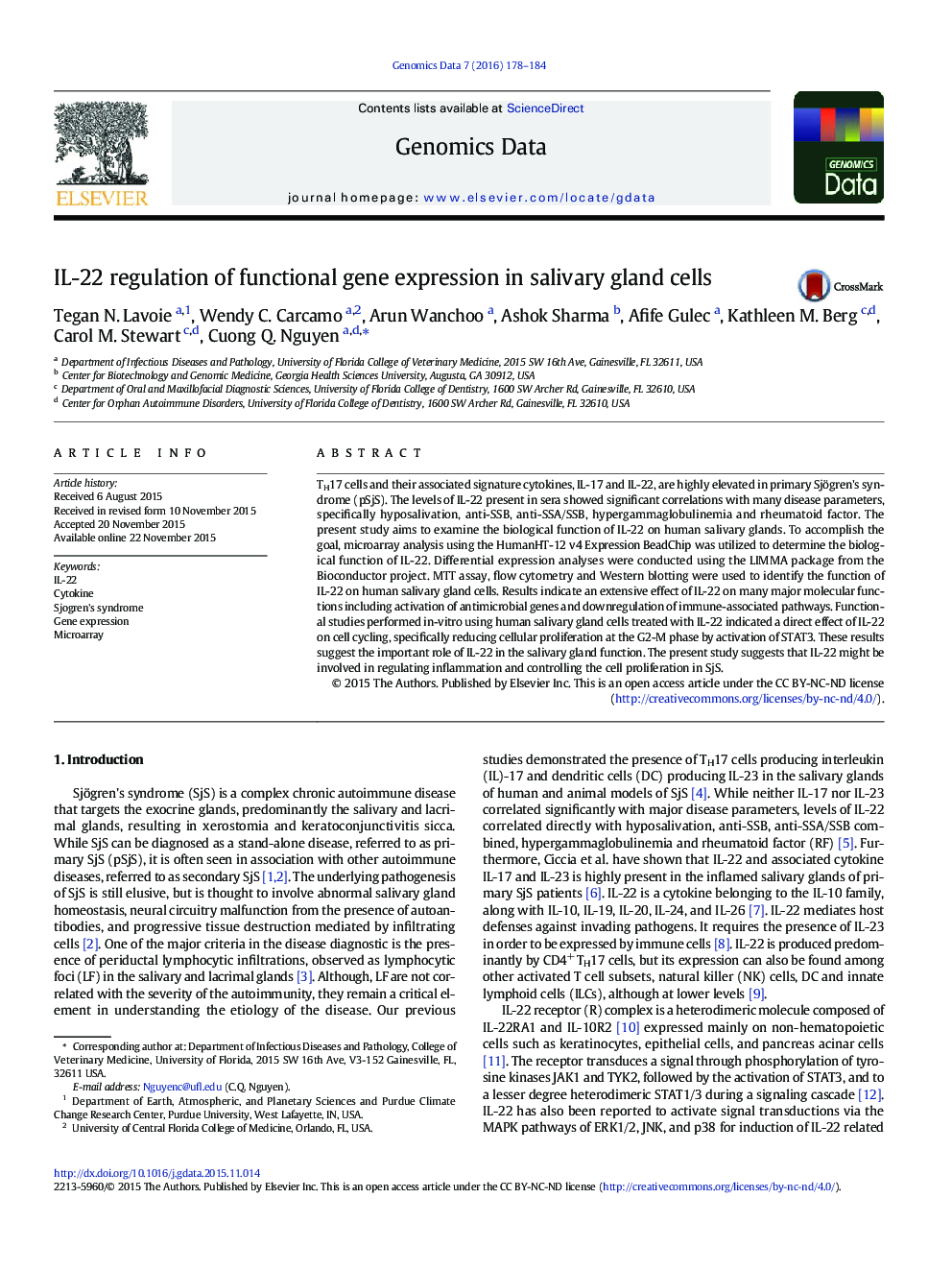| Article ID | Journal | Published Year | Pages | File Type |
|---|---|---|---|---|
| 2822114 | Genomics Data | 2016 | 7 Pages |
ABSTRACTTH17 cells and their associated signature cytokines, IL-17 and IL-22, are highly elevated in primary Sjögren's syndrome (pSjS). The levels of IL-22 present in sera showed significant correlations with many disease parameters, specifically hyposalivation, anti-SSB, anti-SSA/SSB, hypergammaglobulinemia and rheumatoid factor. The present study aims to examine the biological function of IL-22 on human salivary glands. To accomplish the goal, microarray analysis using the HumanHT-12 v4 Expression BeadChip was utilized to determine the biological function of IL-22. Differential expression analyses were conducted using the LIMMA package from the Bioconductor project. MTT assay, flow cytometry and Western blotting were used to identify the function of IL-22 on human salivary gland cells. Results indicate an extensive effect of IL-22 on many major molecular functions including activation of antimicrobial genes and downregulation of immune-associated pathways. Functional studies performed in-vitro using human salivary gland cells treated with IL-22 indicated a direct effect of IL-22 on cell cycling, specifically reducing cellular proliferation at the G2-M phase by activation of STAT3. These results suggest the important role of IL-22 in the salivary gland function. The present study suggests that IL-22 might be involved in regulating inflammation and controlling the cell proliferation in SjS.
